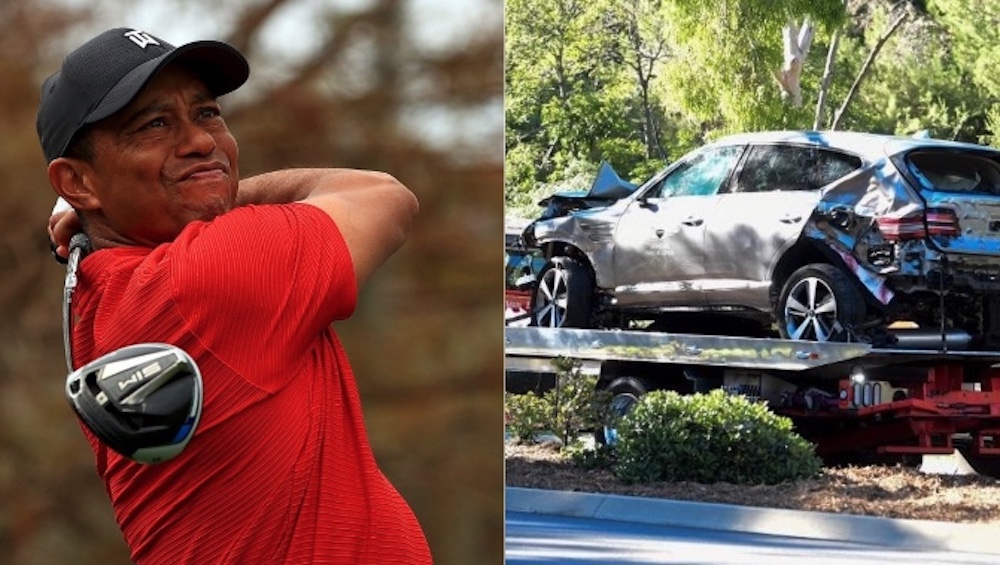
It’s been almost a week since the devastating crash that caused Tiger Woods to undergo several surgeries, and many of us are still searching for answers.
On February 23, Woods was involved in a single vehicle crash that resulted in his car rolling over several times and the pro golfer needing to be transported to a hospital where he underwent surgery on his injured legs.
Many are still left wondering exactly how it all happened, as even Tiger claims to have no recollection of the moments before the big crash:
However, according to a group of forensic scientists, the result of the accident may be a little clearer after studying the evidence.
The experts working on the case had already ruled out speeding as a cause for the crash, as it’s unlikely Woods would have survived the crash had he been speeding.
Click on ‘Follow Us’ and get notified of the most viral Golf stories via Google! Follow Us
Here’s more of the analysis from forensics, which seems to point to the strong possibility that Tiger fell asleep behind the wheel just before the crash. Via USA Today:
Woods, 45, was traveling north near Los Angeles when his sports utility vehicle left its lane, went across the median into the southbound lanes, went off the road, hit a tree, rolled over and sustained major frontal damage. Woods also broke multiple bones in his lower right leg, which indicates he was applying the brake at the time of impact, according to the experts. They also said the evidence indicates Woods applied the brake late into the collision sequence.
“To me, this is like a classic case of falling asleep behind the wheel, because the road curves and his vehicle goes straight,” said Jonathan Cherney, a consultant who provides car accident analysis as an expert witness in court cases. Cherney, a former police detective, examined the Woods’ crash site in person since the accident on Tuesday.
“It’s a drift off the road, almost like he was either unconscious, suffering from a medical episode or fell asleep and didn’t wake up until he was off the road and that’s where the brake application came in,” Cherney said.
Between the broken bones in his right leg indicating he was breaking at the time of impact, and the lack of skid marks on the road, sleeping at the wheel is looking more and more likely in this instance.
Here’s more from the forensic analysis:
There were no skid marks on the road to indicate braking, according to Los Angeles County Sheriff Alex Villanueva. Woods’ vehicle did have anti-lock brakes. So even if he was to slam on the brakes prior to hitting the curb, “you wouldn’t necessarily see tire marks,” said Felix Lee, an accident reconstruction expert who is part of the Expert Institute, a network that provides expert witnesses in litigation.
Lee said a key clue is how the vehicle did not change direction entering the curve and instead went directly into the median.
“My feeling is that speed wasn’t that much of an issue,” Lee said. “It was just some kind of inattention that caused the curb strike.”
Nothing has been confirmed or finalized as of yet, but the good news is that Tiger survived this ordeal and is on the road to recovery –however long it may be.




















